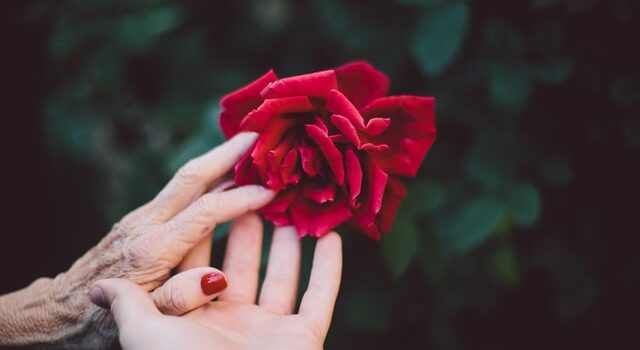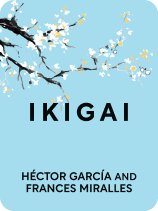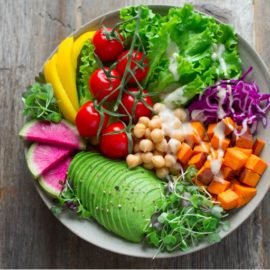

This article is an excerpt from the Shortform book guide to "Ikigai" by Héctor García and Francesc Miralles. Shortform has the world's best summaries and analyses of books you should be reading.
Like this article? Sign up for a free trial here .
Is there a natural way to slow the aging process? What determines the rate of aging?
Many people think that aging is immutable and that there is no point in trying to slow the aging process. However, people age at very different rates and it can’t all be down to good genes. The rate at which you age is determined by a combination of both genetic and lifestyle factors.
Here are three things that can help you slow the aging process to stay healthy and youthful throughout your entire lifespan.
3 Legit Ways to Slow Down the Aging Process
Although death is inevitable, individuals have long sought to preserve health and youth throughout the entirety of their lifespan. But is there a natural way to slow the aging process? There is and it’s proven by people living on Okinawa, the southernmost island of Japan.
Okinawa is chief among the world’s five “Blue Zones,” the geographic regions where people live the longest. Scientists who have studied these zones have uncovered the keys to their residents’ lifelong vitality:
- Mind-body connection
- Regular exercise
- Eating well
1) Mind-Body Connection
To begin with, understand the important role that your mind plays in the aging process. Many studies have shown that keeping a strong and healthy mind, one that’s active and adaptable, is directly connected to staying young. To maintain a healthy mind:
- Learn how to mitigate the effects of stress through serenity
- Practice keeping your mind busy
Using Serenity to Counter Stress
The first way to keep your mind strong is to learn how to remain calm and positive when you’re confronted with stress. Such an attitude can actually help you slow down the aging process of your brain, as science has found that stress makes your nerve cells age faster,
Revitalizing Your Mind
It’s also important to avoid mental laziness. Mental exercise is just as important for health and youthfulness as physical exercise because it revitalizes your brain. One easy but effective way to give your brain a workout and help it stay young is to open yourself to change. For example:
- Step outside your comfort zone.
- Learn new information or a new skill.
- Play a game with other people.
When you take in new information, your brain creates new neural connections to process it. In this way, processing new information actually grows and shapes your brain in new ways, keeping it pliable and young.
2) Regular Exercise
Exercise is one of the longevity factors for people in Blue Zones. It’s not that these people go to the gym all the time. They just stay active and move their bodies. You can easily employ this principle yourself through such simple choices as walking to work, taking the stairs, or joining a sports team.
For a more formal approach to getting more exercise, consider practicing one of the following Eastern mind-body disciplines. Not all of them are from Japan, but all can offer you simple techniques to slow the aging process through gentle movements. Note that these disciplines all invoke the important mind-body connection by combining gentle physical exercise with an awareness of your breathing. Aligning your breathing with your movement helps you to remain centered instead of being swept away by your thoughts and worries.
Radio Taiso
Radio taiso dates back to before World War II. It gets its name from the fact that instructions for doing it used to be broadcast through radio. Today, most people follow radio taiso instructions on television or through the Internet. In Ogimi, nearly everybody does radio taiso, even nursing home residents. A workout takes only five or 10 minutes, and the movements are designed to exercise a maximum number of joints. The most basic exercise is to raise your arms over your head from the side in a circular motion and then bring them down.
Yoga
Yoga originated in India as a way to unite and purify the mind and body while bringing people closer to both their personal nature and the divine. The most widely practiced form of yoga in the West (and also in Japan) is the body-focused style called hatha yoga. It consists of practicing different asanas—physical poses or postures—to balance your energies.
Tai Chi
Originally intended as a discipline for personal growth, self-defense, and mind-body healing, tai chi has now become widely known as a general method of exercise, largely due to the Chinese government’s promotion of it for that purpose. The best-known among many different tai chi styles are Chen, Yang, Wu, and Hao. The one most people are familiar with today is Yang-style, which has long, fluid movements. All tai chi styles have the same goals:
- Use stillness to control movement.
- Use finesse to overcome force.
- Arrive first, move second.
- Know both your opponent and yourself.
Qigong
The word qigong translates roughly as “working with the life force” or “cultivating life energy.” It’s a Chinese art, loosely related to tai chi, that seeks to strengthen a person’s qi or chi (inner energy) through movement, breathing, and meditation. In keeping with the tenets of traditional Chinese medicine and philosophy, qigong holds that your life energy flows through your whole body and consists of five different currents corresponding to the body, breath, mind, life force, and spirit. Qigong’s most widely known exercise seeks to balance these currents, and the discipline as a whole teaches that by learning to regulate these currents, you can unify your entire being.
Studies have shown that qigong is associated with many health benefits, including improved heart health, better circulation, reduced side effects from cancer treatments, better blood flow to the brain, better mind-body connection, lower blood pressure, better balance among the sex hormones, and more.
Getting Enough Sleep
Having considered these exercises, it’s worth mentioning that the warning against being too sedentary doesn’t extend to avoiding sleep, which provides important anti-aging benefits. The modern world suffers from a positive plague of sleep deprivation, and this is causing us to age prematurely and suffer from a variety of health problems. Sleep is a major anti-aging tool because it generates melatonin, a powerful antioxidant that strengthens your immune system, smooths your skin, and has other benefits. Combining adequate sleep with gentle exercise is a major way to slow the aging process.
3) Eating Well
A variety of research has uncovered the principles of Okinawan eating for promoting health and longevity. Understanding these principles is important to anybody who’s interested in staying healthy and youthful throughout the entire lifespan.
Eat Little Food
Compared to other people, even to other Japanese, Okinawans eat very little overall. The average Japanese caloric intake is about 2,068 calories per day. Okinawans consume only 1,785. Not insignificantly, people in all five of the world’s Blue Zones likewise consume fewer calories than people in other parts of the world. Moreover, modern medical science has verified the health benefits of eating less. Calorie restriction frees up energy that would otherwise go into digestion. It reduces the amount of insulin-like growth factor 1, which plays an important role in aging/ It protects against negative health conditions such as obesity, type-2 diabetes, and cardiovascular disease. The key to practicing calorie restriction effectively is to eat only foods with a high nutritional value while avoiding empty junk food.
Eat a Varied Diet
While Okinawans may eat very little, the food they do eat is highly varied. Their diet includes an average of 18 different foods per day and 206 different foods in all. They use the metaphor of a rainbow to determine whether they’ve achieved the desired variety: Is there a multiplicity of colors on the plate?
Okinawans base their diet on grains, eating rice as their primary food, sometimes adding noodles. They also eat at least five servings of vegetables and fruits—and at least seven different types—every day. In fact, they fill more than 30 percent of their diet with vegetables, of which legumes, soy, potatoes, and vegetables are staples. They also eat very little salt and sugar.
The Antioxidant Connection
The Okinawan diet amplifies this effect by including many antioxidant-rich foods. Antioxidants slow down the oxidation process in your cells by fighting free radicals, molecules that cause cellular oxidation and may contribute to cancer. Okinawans eat 14 high-antioxidant foods almost every day:
- Tofu
- Miso
- Tuna
- Carrots
- Goya (bitter melon)
- Sea kelp
- Cabbage
- Seaweed
- Soy sprouts
- Hechima (a gourd-like cucumber)
- Soybeans
- Sweet potatoes
- Peppers

———End of Preview———
Like what you just read? Read the rest of the world's best book summary and analysis of Héctor García and Francesc Miralles's "Ikigai" at Shortform .
Here's what you'll find in our full Ikigai summary :
- How to apply the concept of ikigai, or life purpose, to your own life
- Why the people of Okinawa live longer than people anywhere else
- The 10 commandments of ikigai






